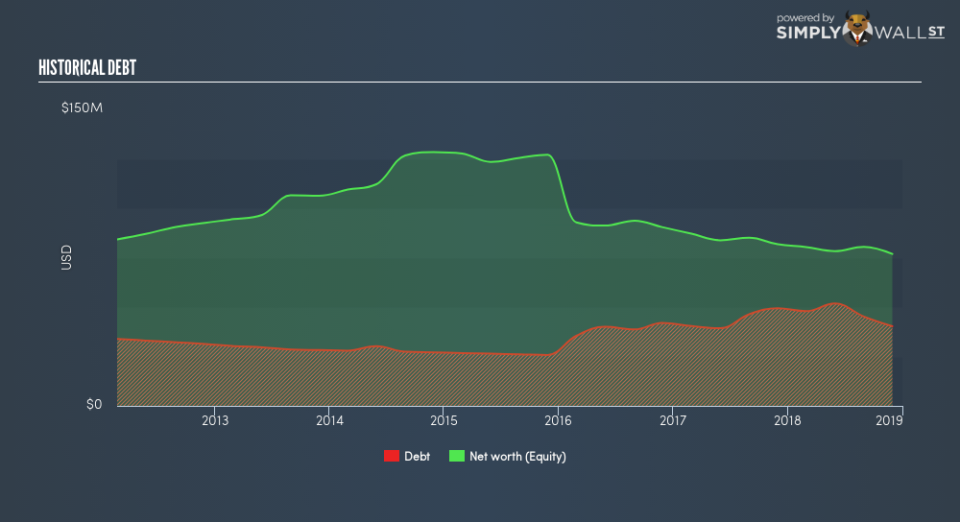Is Franklin Covey Co. (NYSE:FC) A Financially Sound Company?

Want to participate in a short research study? Help shape the future of investing tools and you could win a $250 gift card!
Franklin Covey Co. (NYSE:FC) is a small-cap stock with a market capitalization of US$346m. While investors primarily focus on the growth potential and competitive landscape of the small-cap companies, they end up ignoring a key aspect, which could be the biggest threat to its existence: its financial health. Why is it important? Given that FC is not presently profitable, it’s essential to assess the current state of its operations and pathway to profitability. Here are a few basic checks that are good enough to have a broad overview of the company’s financial strength. Nevertheless, this commentary is still very high-level, so I’d encourage you to dig deeper yourself into FC here.
How much cash does FC generate through its operations?
Over the past year, FC has reduced its debt from US$49m to US$40m , which includes long-term debt. With this reduction in debt, FC’s cash and short-term investments stands at US$11m for investing into the business. Additionally, FC has generated cash from operations of US$23m during the same period of time, leading to an operating cash to total debt ratio of 56%, meaning that FC’s current level of operating cash is high enough to cover debt. This ratio can also be interpreted as a measure of efficiency for loss making businesses since metrics such as return on asset (ROA) requires positive earnings. In FC’s case, it is able to generate 0.56x cash from its debt capital.
Can FC pay its short-term liabilities?
At the current liabilities level of US$82m, it seems that the business has maintained a safe level of current assets to meet its obligations, with the current ratio last standing at 1.01x. Generally, for Professional Services companies, this is a reasonable ratio as there’s enough of a cash buffer without holding too much capital in low return investments.
Does FC face the risk of succumbing to its debt-load?
With a debt-to-equity ratio of 52%, FC can be considered as an above-average leveraged company. This is not unusual for small-caps as debt tends to be a cheaper and faster source of funding for some businesses. However, since FC is presently unprofitable, sustainability of its current state of operations becomes a concern. Maintaining a high level of debt, while revenues are still below costs, can be dangerous as liquidity tends to dry up in unexpected downturns.
Next Steps:
FC’s high cash coverage means that, although its debt levels are high, the company is able to utilise its borrowings efficiently in order to generate cash flow. Since there is also no concerns around FC’s liquidity needs, this may be its optimal capital structure for the time being. This is only a rough assessment of financial health, and I’m sure FC has company-specific issues impacting its capital structure decisions. I suggest you continue to research Franklin Covey to get a better picture of the small-cap by looking at:
Future Outlook: What are well-informed industry analysts predicting for FC’s future growth? Take a look at our free research report of analyst consensus for FC’s outlook.
Valuation: What is FC worth today? Is the stock undervalued, even when its growth outlook is factored into its intrinsic value? The intrinsic value infographic in our free research report helps visualize whether FC is currently mispriced by the market.
Other High-Performing Stocks: Are there other stocks that provide better prospects with proven track records? Explore our free list of these great stocks here.
To help readers see past the short term volatility of the financial market, we aim to bring you a long-term focused research analysis purely driven by fundamental data. Note that our analysis does not factor in the latest price-sensitive company announcements.
The author is an independent contributor and at the time of publication had no position in the stocks mentioned. For errors that warrant correction please contact the editor at editorial-team@simplywallst.com.

